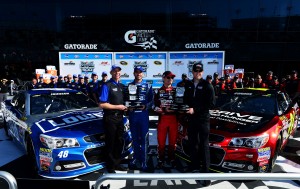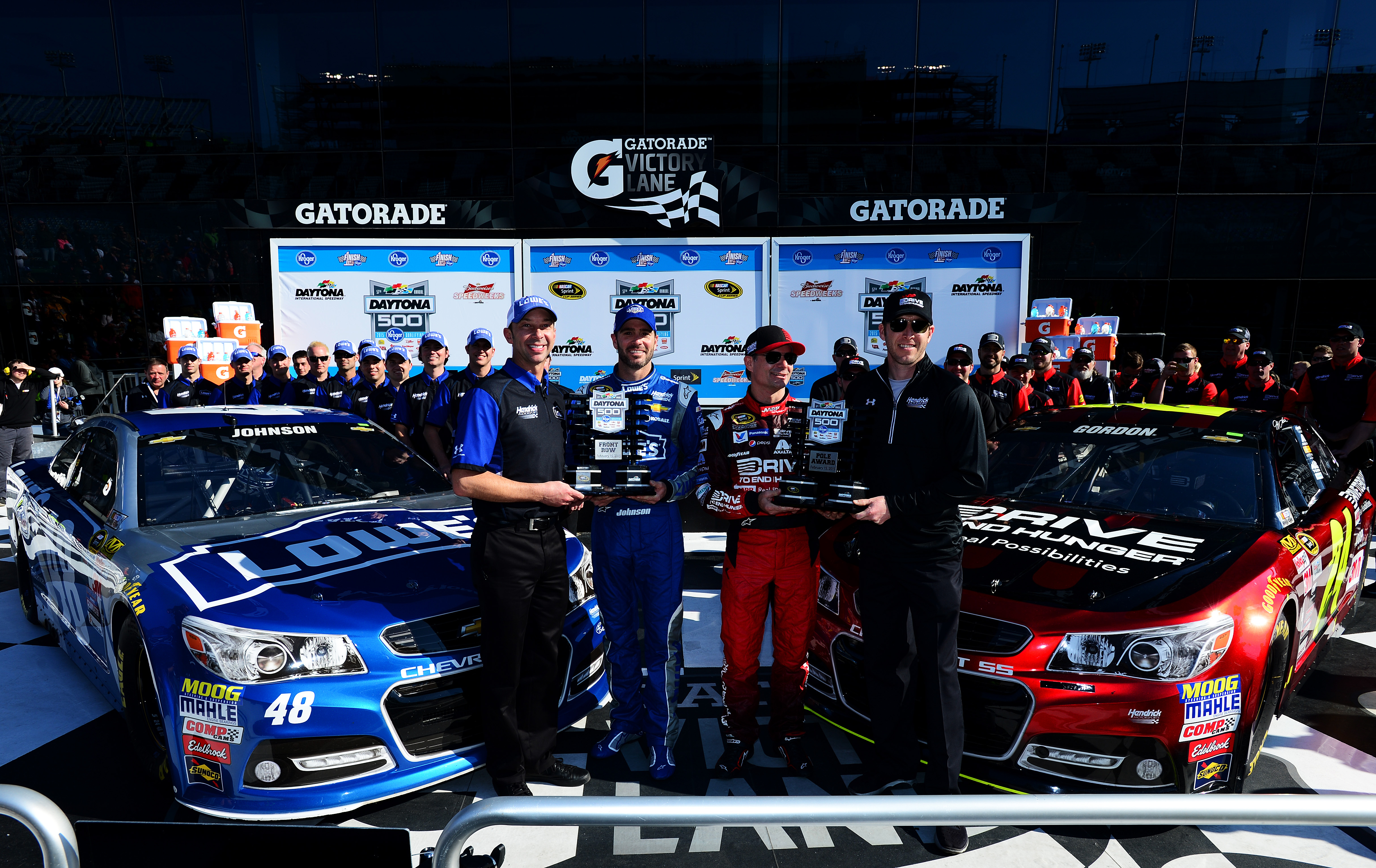
One thing about the Daytona 500 that is unlike any other race on the entire tour is the qualifying procedure. To get into the race is not just a one-day deal. In reality, it’s a near week-long process, with just two days of no track activity. Let me explain in more detail.
A week before the actual race, it’s pole qualifying. The only positions that are set are the ones for the front row. The Positions 3-32 are set on Thursday in the Budweiser Duels, a pair of 60-lap qualifying races. Drivers that qualified in odd-numbered positions race in the first dual to set the inside row, while the even-numbered positions are in the second dual to set the outside row. The front row qualifiers start on the pole for their respective races, with the top-15 drivers in each race locking into the race. If a front-row qualifier finishes in the top-15, then the driver that finishes 16th will start in either the 31st or 32nd position.
After that, positions 33-36 go to the cars with the fastest single-lap speed from the qualifying session that set the front row. Finally, positions 37-43 get set by car owner points based on the previous season, with position 43 going to a past champion provisional if needed.
Sounds pretty straight forward. Single-car runs on Sunday, race your way in on Thursday. Well…not as easy this time.
For 2015, NASCAR made a change to the Sunday procedures, one that brought back bad memories from the last plate race a year ago.
Sunday’s qualifying procedures went from single-car runs to a group qualifying effort, similar to what is normally done at the other tracks on the schedule. Based on a draw, drivers would go out in one of two groups for the first round. The top-24 from the first round would move onto the second round, with the top-12 going into the third round. That final round would only set the front row.
What happened the last time this was done…a cluster (insert swear word here).
Drivers were hesitant to go out because they didn’t want to lead a pack, since the draft could be used to gain faster speed and the car out front is at a disadvantage. It led to this: a second-year driver missing the first race of his career, a four-time champion starting shotgun, and pretty much everyone in the garage madder than a bear with a mouth full of bees.
I personally am fine with the three-round or two-round qualifying procedures at unrestricted tracks, as on tracks less than 1.25-miles in length only have two rounds to set the field. But, on plate tracks, where you start isn’t really as big a deal. In fact, in the other three races, once qualifying is done teams are under “impound” procedures, which means the cars are put in their garage stalls, and then they are closed. No adjustments are made until the morning of the race, and even then they are minimal adjustments, such as tape on the grille and adding water to the cooling system.
But, at a plate track, where you start really doesn’t have as big an effect, because as long as one can keep up with the draft, they have a chance to win.
Drivers didn’t like the idea of another driver manipulating their qualifying effort, especially when traditionally this race is set with qualifying races anyway. Just go out and see who is the fastest on the track, and the top two get to start out front.
This year, the front row is once again a sweep by Hendrick Motorsports, as Jimmie Johnson will start on the outside of the front row, while his teammate, part owner, and the longest-running driver with one team, Jeff Gordon, earns the No. 1 spot. It is also the final time Gordon will be running in the Daytona 500 due to the fact that, as was said in part one of the Speedweeks series, this will be Gordon’s final full season at the wheel.
So, we have the front row set. Now, beginning at 7 p.m. on Thursday, the remainder of the field will be set. Part 3 will cover the duels, and give you all the full line-up for the 57th Annual Daytona 500.



